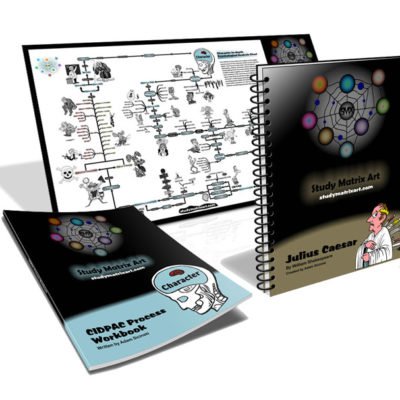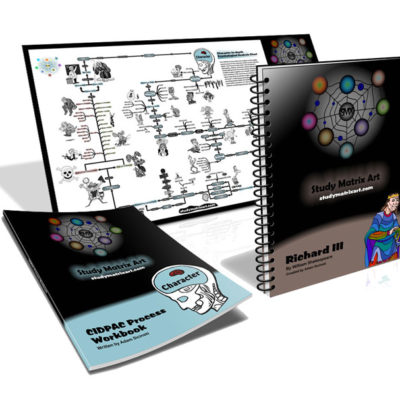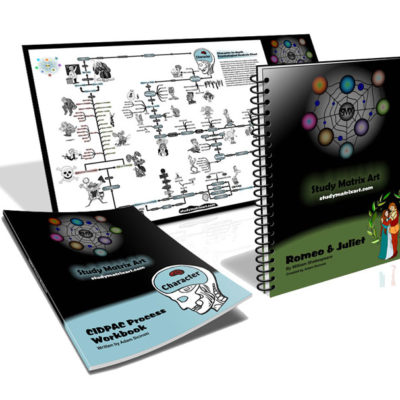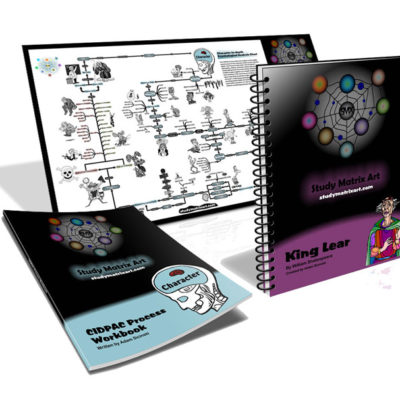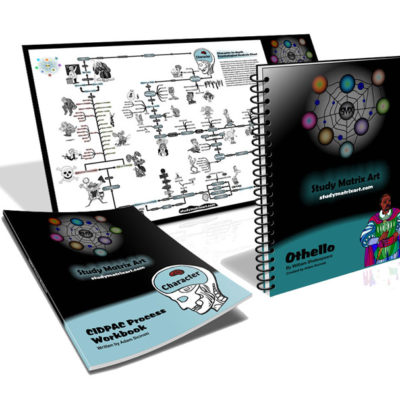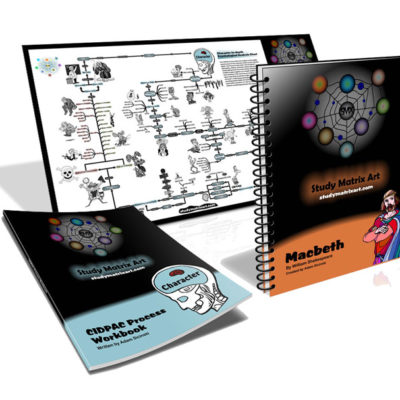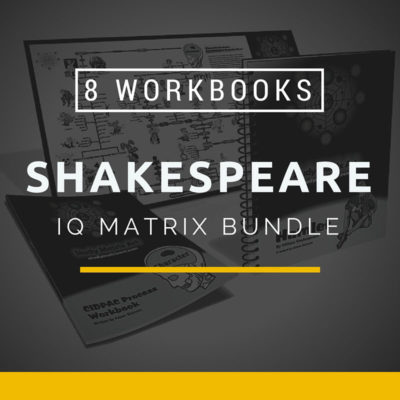Shakespeare’s Hamlet is one of the most well known and recognized tragedy plays.
Hamlet is a classical play of an intense and thought provoking nature that brings to light some very important and fundamental themes and ideas.
This IQ Matrix of Shakespeare’s Hamlet brings together the plot of Hamlet into a simple, visual and coherent form allowing for greater understanding of key themes, characters, structure, style, historical background, quotes and the synopsis of the play. It also includes William Shakespeare’s biography and provides the student with key summaries and quiz type questions that test their knowledge and understanding of the book notes.
Teaching Hamlet is made easy through the use of this Hamlet study guide. Teachers can prepare Hamlet lesson plans, activities and create summary notes from this content in flexible and creative ways. This unique teaching resource about Hamlet also provides students with a fun and unique way to learn the essence of Shakespearean literature, which will dramatically enhance their understanding of the play.
Key Segments of the Workbook
This IQ Matrix includes the following key segments (see versions for further explanation):
- Style breakdown
- Structure breakdown
- Historical background information
- Synopsis and summary presented in a written and within a mind map format
- Characters analysis
- Themes and Issues breakdown
- Important Quotes
- A quiz to test your knowledge
- Study Filters to help accelerate the learning process and understanding of the play (see version details)
Because many students find William Shakespeare plays difficult to understand, an IQ Matrix becomes an ideal tool making understanding of the major themes, characters, synopsis and so forth, simple and quick. An IQ Matrix is however not a replacement for the original text, but rather works together with the play and traditional summaries you will find online.
Where this Shakespearean IQ Matrix workbook will be of greatest benefit is in the way it presents the most important parts of the play’s script together into a coherent and understandable visual interactive format. This encourages the development of your photographic memory of this material, which is critical for examinations and test preparation purposes.
Here is what you get…
First you get the IQ Matrix workbook which contains 34 pages and summarizes the play in detail. This workbook includes:
- Original IQ Matrix pages (the first six bullet-points listed above).
- Quick summary pages for better understanding of the IQ Matrix workbook.
- Quick quiz pages to test your knowledge and understanding of the IQ Matrix.
Secondly you get the Study Filters workbook which includes the four accelerated learning IQ Matrix Study Filters for those seeking to develop a photographic memory of the material they are studying.
Here is an explanation of the four study filters:
- Pathway Filter: Promotes and encourages the formation of associations through interlinking of the IQ Matrix pathways.
- Content Filter: Tests your knowledge and ability to recall the IQ Matrix content from memory with the help of associative pictures.
- Pictent Filter: Tests your knowledge and ability to recall the IQ Matrix content from memory without the help of associative pictures.
- Freehand Filter: The most advanced filter encourages the learner to recreate the IQ Matrix from memory without associative connections.
Thirdly you get the Character In-depth Psychological Analysis Chart (CIDPAC) which allows you to thoroughly examine each of the characters within a text in greater depth than ever before.
The CIDPAC Process breaks down each character’s personality, motives, decisions, actions and much more, into clearly defined and structured outlines allowing the student to piece together an in-depth analysis and study of each character of the play. This helps open new doors for greater insight and understanding of each character’s underlying psychological makeup, as well as providing greater depth of knowledge when answering examination questions. It is also an invaluable tool for teachers conducting classroom discussions.


